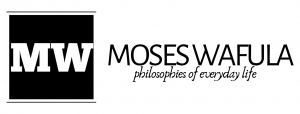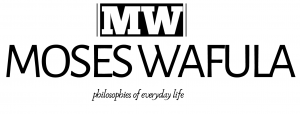In the world of job hunting, stupid mistakes are so frequent that I struggle to understand it. I can write a book’s worth of material on stupid mistakes job seekers make, but that would make for a very lengthy article. So for now, we’ll start with 3 big ones that are just plain stupid and hurt your chances of getting a great job.
Are you guilty of making these mistakes?
You Don’t Have a LinkedIn Profile
In 2020, NOT having a LinkedIn profile when job hunting is like trying to teach your dog to fly – you will not be successful. Jokes aside, not having a LinkedIn profile is the BIGGEST mistake you can make when looking for a job. First of all, LinkedIn is the number one place for recruiters to find and hire employees. According to Bullhorn (the leading recruitment software company in the world), 97 per cent of recruiters say they used LinkedIn to find job candidates and 67 per cent of recruiters say that they solely use LinkedIn for recruiting.
Now, If LinkedIn is the number one place where employers go to hire new employees, what possible excuse do you have for not having a LinkedIn profile? Now, 93% of recruiters are likely to look at a candidates social profile Recruiters and hiring managers almost always look up your LinkedIn profile. Why? Simple, they’re hoping to find more information on you to better decide if you’re the right fit for the company.
Not having a LinkedIn profile puts you at a disadvantage.
By not having a LinkedIn profile you deny yourself an opportunity to stand out. If 93% of recruiters are checking applicant’s social media profiles and the majority of candidates have a LinkedIn profile, why on earth would you put yourself in such a disadvantage by not having a LinkedIn profile? Furthermore, NOT having a LinkedIn profile raises possible red flags such as: If you don’t have a LinkedIn profile, recruiters may assume you have something to hide; even worse, they may think you’re lying.
It’s very difficult to lie about your experiences on the site because a hiring manager can simply find your boss, supervisor or co-worker on LinkedIn, message them and verify your employment. They can also message them to find more information about you.
On top of that, candidates that use social media are categorized as tech and social media savvy – these are desirable traits in our digital age. LinkedIn is a social media site and when a recruiter cannot find you on LinkedIn, the first assumption is that you may not understand things like Facebook, internet, mobile technology, apps or are simply not social media knowledgeable in general. None of these things may be true at all, but why even put yourself in that situation? Take 15 minutes, create a LinkedIn profile, and don’t let this silly mistake hurt your chances of finding a great job.
You Don’t Follow Up
After you applied for a job, you need to ALWAYS follow up with employers. With most job ads getting over 1000 applications in Kenya today, corporate job ads getting over 1500 applications, and 427,000 new resumes posted each week on sites like Monster.com, it’s getting very difficult to separate yourself from everyone else. After initially applying for a job, following up is a smart and easy way to separate yourself from the competition.
If 1500 people applied for a position, you can’t just rely on the strength of your skills and experiences to get an interview anymore. After all, hiring managers spend an average of only 5 seconds looking at a resume, that’s simply not enough time to make an impression. In today’s age, you have to constantly search for ways to stand out from the competition. A simple follow up can accomplish that goal. Y
ou can follow up in two ways: over the phone or online. Most importantly, each follow up must add value. The first thing you need to do is call the person in charge of hiring you. If that information isn’t available in the job posting, you can call the company and ask to speak to someone in HR (you can also use LinkedIn.com to find an HR employee in that company).
The goal of a follow up is to engage the hiring manager in a conversation, add value to yourself and ultimately create an impression. You can use your communication skills to start any kind of conversation, but the easiest way is to say your name, why you’re calling and ask a good question. Have a conversation and do your best to say things that add value to you as an employee.
Remember, you are talking to the person who is in charge of giving you the interview and possibly, the job. If you have a chance to mention your particular skills or experiences in the conversation, jump at the opportunity to do so. Try to sell yourself at any chance possible, mention anything that would make the hiring manager give you greater consideration.
With hundreds of people applying for a position, you have to take the initiative of following up with the hiring manager to make an impression. Have a conversation, introduce yourself and create a good positive impression so they’ll remember your name when they get to your resume. If 300 people applied for a job, a small group of people will follow up, be part of that group and separate yourself from the competition.
A follow-up forces an HR employee to think about you, even if you just call and ask a question, some kind of impression has been made. Your communication skills determine how good of an impression you can make. But if you’re not a great talker, get behind a keyboard and start typing, there’s more than one way to follow up…Most HR employees have a LinkedIn account, if you don’t have the necessary communication skills to have a conversation with an HR employee, simply message them on LinkedIn.
The same rules follow you need to follow up by starting a conversation with an HR employee. There are several ways to start a conversation, but again, the easiest method is simply to say your name, why you’re massaging them and ask a good question. It gets tricky online because you may just end up with a short reply and not be able to start a dialogue. This is why a phone call is usually more effective than a LinkedIn message. However, following up on LinkedIn is still much better than no follow up at all.
Remember, if 300 people applied for a job, that HR person will not remember everyone. When they see a message from you on LinkedIn, it’s another chance for that HR employee to consider you and keep your name fresh in their memory. Again, a follow-up forces an HR employee to think about you, and that’s exactly what you want. You took the initiative to make the call or send the message and created some kind of impression for yourself. If you do this for every job you applied to, basic logic tells us that you’ll get more responses and interviews.
Follow up – it’s simple, easy and very effective.
Check your Email Signature
In an ideal situation, you would end every new human interaction with “do you mind if we exchange business cards, I’m always trying to expand my network”. How do people get great jobs? Simple, it’s not WHAT you know, it’s WHO you know. So by that logic, the more people you know, the greater your chances of finding a job. An email signature is simply a couple of words that are automatically added to the end of every email you send. Most people use an email signature to display their contact details like name and phone number.
Expand on that and give people a chance to network and connect with you via LinkedIn. Change your email signature to something like this: The world uses LinkedIn to network, it’s simply an online Rolodex of your professional contacts. Spending 5 minutes to change your email signature can result in meeting new people every week! Remember, it’s about WHO you know, the more connected you are – the greater your chances of finding a job.
You send an email to a plumber asking for a quote to fix your drain. The plumber adds you on LinkedIn, but you don’t care because you are an engineer and that can’t possibly help you find a job in engineering. Wrong! Remember, when you add someone on LinkedIn, you now have access to their entire network and contacts, that’s a whole world of people that you haven’t even met. One of the plumber’s contacts maybe a VP of an engineering company you were thinking of working for. Now you’re connected to that VP via a mutual contact.
How many emails do you send out a week? Imagine half of them resulting in connections with new people. How can you afford not to capitalize on such a simple way to expand your network? Don’t be a dummy, take 5 minutes to change your email signature so you can meet contacts that can help you find a great job.
Conclusion Let’s be honest here, there’s a lot more than 3 mistakes that people make when job hunting. I mean, I’m looking at a resume that was just uploaded 10 seconds ago on Monster that has a watermark of flowers, and he’s a corporate lawyer! What kind of mistakes do you guys see people make when job hunting? I’m looking forward to hearing about them. Let us know or just comment about anything you want. I do reply to every comment.









